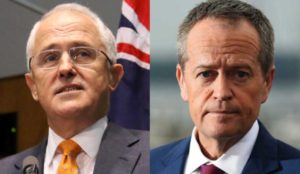Election forecast: foggy but clearing in July
By Cyprian Fernandes
According to the ABC’s Vote Compass online assessment of their reader’s individual position in relation to their preferences and alignment with the major parties, I am 63 percent aligned with the Liberal/National Party Coalition, 53 percent with Labor and 32 percent with the Greens. Actually, I feel as if I am a bit foggy about the whole thing at the moment. I feel I am not convinced by any of the three parties. I hope things will become clearer in the last week of June. In the meantime, after many years, I am stuck with the swinging voter label.
In the 1980s and 1990s, life was so much easier, the choice was pretty clear: Paul Keating (Labor) and Peter Costello (Coalition), two of the most successful, reforming and innovative politicians of recent times. Keating, as Treasurer (1983-1991), introduced far reaching economic reforms, progressive deregulation of the financial sector, floated the Aussie dollar, made vital tax reforms, dismantled protectionist barriers and his reforms allowed the economy to expand. He also deregulated the airline and telecommunications industries and set up a national frame work for power. He also returned the Budget to surplus.
As Prime Minister (1991-1996), Keating continued on his national reform path, setting up the Nation Training Authority and a national superannuation for low income earners and reforms that addressed the long term unemployed. He instigated the review of the Sex Discrimination Act and enacted the Mabo legislation which recognised land rights for indigenous people.
Peter Costello is one of Australia’s longest serving Treasurers (1996-2007). He reformed the Australian Tax system, restructured financial regulation and exercised fiscal restraint. He also introduced the Goods and Service Tax (GST), unpopular at first but now accepted part of everyday life. Costello reduced income tax, thus allowing more money to circulate in the economy.
Those were the glory days. Then the rot seems to have set in.
So here we are today when nothing is clear cut. Malcolm Turnbull elbowed out Tony Abbott and took over the reins as Prime Minister. At first he was a bright, shining star in Canberra but of late his star has certainly been slipping. With the absence of genuine reforms, like the ones I have mentioned above, Turnbull is making his opponent Bill Shorten look good. Turnbull, it seems, is all image and very little substance. It is a shame really because he is a very likeable bloke.
So what of the uncertain next few weeks? One thing that is certain is that there are strange alignments sneaking into view. Both the Coalition and Labor are being all lovey-dovey and are telling anyone who is willing to listen this message: Vote either Lib or Labor but don’t waste your vote on the Greens. It would seem that both parties are of one mind that Greens should be wiped off the election landscape. At this point of the General Election, neither Labor nor the Coalition will direct their preferences to the Greens and the Greens, in turn, are leaving the preferences decision to their individual candidates. I wonder if this ploy will have reverse effect, people voting Green simply because they have been told not to!
According to the Greens, “our preferences are determined by our membership ”“ not factional powerbrokers. Our members believe in welcoming people who seek asylum, strong action on global warming and tackling inequality”.
The second thing both the Coalition and Labor agree is “stopping the boats of people smugglers” attempting to bring asylum seekers and refugees to Australia. Both also strongly support the offshore processing of these sad and tragic people. Both parties are almost, rightly or wrongly, obsessed with stopping the people smugglers. The common answer is that by stopping the boats Australia is actually stopping from death in the seas.
The Greens’ strongest selling point, especially with young people, is their climate change policy. They plan to bring on the “next wave of technologies help reduced Australia’s reliance on coal and gas fired power through a distributed energy system, including community-owned renewable energy generation, battery storage, electric vehicles and fast, affordable public transport systems”.
Labor on the hand plans to introduce a domestic emissions trading scheme that have will get Australia’s pollution levels back under control and to establish the architecture for an enduring ETS. The first phase of this plan will operate from 1 July 2018 to 30 June 2020 to align with the second Kyoto Protocol. The ETS would include a scheme for polluters and another for electricity providers. More details to come on the ETS.
The Coalition plans to cut Australia’s emissions by 26 to 28 per cent by 2030 and Labor promises to cut emissions by 45 per cent by 2030.
At this early stage, Australia appears to be favouring Labor but anything could happen in the next few weeks.
Short URL: https://indiandownunder.com.au/?p=6944

